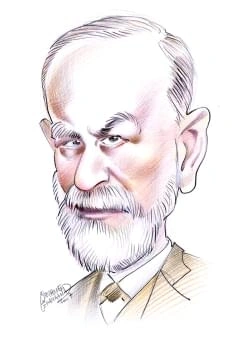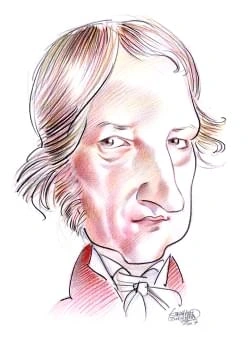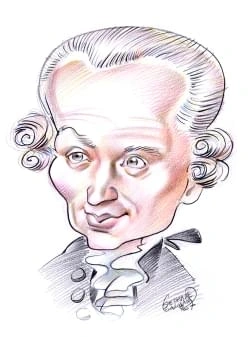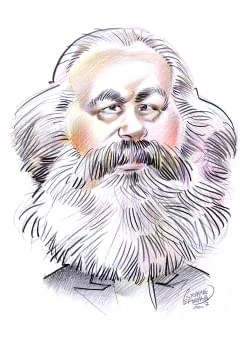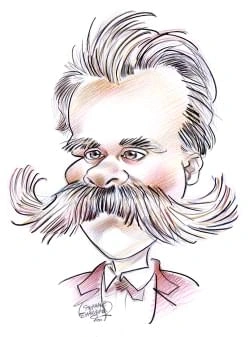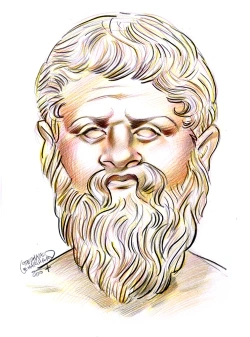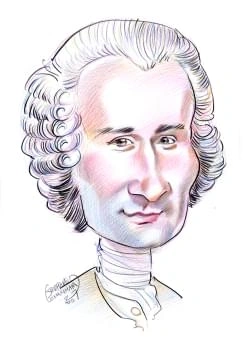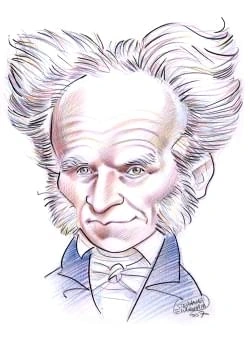84 résultats pour "discovered"
-
Radioactivity
I
INTRODUCTION
Marie Curie
Working with her husband, Pierre Curie, French physicist Marie Curie discovered the radioactive elements polonium and
radium in 1898.
Rutherford when he allowed an alpha-emitting substance to decay near an evacuated thin-glass vessel. The alpha particles were able to penetrate the glass and werethen trapped in the vessel, and within a few days the presence of elemental helium was demonstrated by use of a spectroscope. Beta particles were subsequentlyshown to be electrons, and gamma rays to consist of electromagnetic radiation of the same nature as X rays but of considerably greater energy. A The Nuclear Hypothesis Rutherford...
-
Electron
I
INTRODUCTION
Models of the Atom
Once scientists discovered the electron, they set out to explain how electrons behave in atoms.
Electron Density and Orbital ShapesAtomic orbitals are mathematical descriptions of where the electrons in an atom (or molecule) are most likely to be found.These descriptions are obtained by solving an equation known as the Schrödinger equation, which expresses ourknowledge of the atomic world. As the angular momentum and energy of an electron increases, it tends to reside indifferently shaped orbitals. The orbitals corresponding to the three lowest energy states are s, p, and d, respectively....
-
Renaissance Art and Architecture
I
INTRODUCTION
Renaissance Composition
During the Renaissance (15th and 16th centuries) artists discovered new ways to help them create more realistic and
compelling images.
with reliefs, had been familiar for centuries. A Early Renaissance Sculpture Ghiberti’s Gates of ParadiseThe Gates of Paradise are bronze doors created by Italian Renaissance sculptor Lorenzo Ghiberti between 1425 and 1452for the east entrance to the baptistery of the Florence Cathedral in Italy. This detail, showing Isaac and Esau, is from oneof the doors' ten panels, each of which illustrates a story from the Bible. Ghiberti endowed the scenes with volume, depth,and movement, and helped initi...
-
Uranus (planet) - astronomy.
V COMPOSITION AND STRUCTURE A Interior of Uranus Uranus contains mostly rock and water, with hydrogen and helium (and trace amounts of methane) in its dense atmosphere. Astronomers believe that Uranus, likeNeptune, formed from the same material—principally frozen water and rock—that composes most of the planet’s moons. As the planet grew, pressures andtemperatures in the planet’s interior increased, heating the planet’s frozen water into a hot liquid. Uranus probably has a relatively small roc...
-
History of Astronomy - astronomy.
Egypt, the Sun was directly overhead at noon. On the same date and time in Alexandria, Egypt, the Sun was about 7 degrees south of zenith. With simple geometryand knowledge of the distance between the two cities, he estimated the circumference of the Earth to be 250,000 stadia. (The stadium was a unit of length, derivedfrom the length of the racetrack in an ancient Greek stadium. We have an approximate idea of how big an ancient Greek stadium was, and based on that approximationEratosthenes was...
-
X-Ray Astronomy - astronomy.
Some neutron stars have weaker magnetic fields that allow incoming material to settle onto the entire surface of the neutron star. Eventually, so much material buildsup that the surface layer becomes dense enough to set off a vast thermonuclear explosion, called an outburst. The explosion heats gas to produce X rays. Such aneutron star—called an X-ray burster—can increase its X-ray production by a million times during an outburst. The X-ray glow fades over time, and the binary systementers a lon...
-
Neandertals.
Neandertals made stone tools by striking flakes from rock “cores.” The cores were carefully selected and prepared so that only a single blow was normally required todetach a flake. A number of relatively standardized flakes were sometimes produced from a single core. These sharp flakes served as “blanks” that were further workedand shaped into the desired tools. Suitable stone was sometimes rare, and often tools were sharpened and resharpened to make new tools, yielding a whole variety ofshapes...
-
Gold - chemistry.
producers of gold during this period. Spain's domination in South America resulted, in the 16th century, in a large increase in gold produced in the New World; someresulted from simple seizure of gold from the Native Americans, who had long mined the metal. In the same century Mexico contributed about 9 percent of the totalworld production. Gold was discovered in Australia in February 1851, and rich fields were found there. By the middle of the 19th century the United States produced a considera...
-
-
Neptune (planet) - astronomy.
The gaseous atmosphere of Neptune contains hydrogen, helium, and about 3 percent methane. It extends about 5,000 km (about 3,000 mi) above the planet’s ocean.Light reflected from Neptune’s deep atmosphere is blue, because the atmospheric methane absorbs red and orange light but scatters blue light. In 1998 astronomersalso identified molecules of methyl in Neptune’s atmosphere. Methyl molecules each contain one carbon atom and three hydrogen atoms. Methyl molecules are knownas hydrocarbon radical...
-
Quark
I
INTRODUCTION
Quark, smallest known building block of matter.
Constituents of MatterMatter is composed of tiny particles called quarks. Quarks come in six varieties: up (u), down (d), charm (c), strange (s),top (t), and bottom (b). Quarks also have antimatter counterparts called antiquarks (designated by a line over the lettersymbol). Quarks combine to form larger particles called baryons, and quarks and antiquarks combine to form mesons.Protons and neutrons, particles that form the nuclei of atoms, are examples of baryons. Positive and negative kaons aree...
-
Saturn - astronomy.
measurements of the magnetic field made by the Voyager space probes in the 1980s. Additional Cassini findings reported in March 2007 suggested that particles originating from geysers on the moon Enceladus may provide a partial explanation for thechange. The neutral gas particles become electrically charged and are captured by Saturn’s magnetic field, forming a disk of hot, ionized gas around the planet’sequator. The charged particles interact with the magnetic field and slow down the rotation of...
-
Carbon - chemistry.
Graphite is black and slippery and conducts electricity. In graphite, the atoms form planar, or flat, layers. Each layer is made up of rings containing six carbon atoms.The rings are linked to each other in a structure that resembles the hexagonal mesh of chicken wire. Each atom has three sigma bonds (with 120° between any two ofthe bonds) and belongs to three neighboring rings. The fourth electron of each atom becomes part of an extensive pi bond system. Graphite conducts electricity,because th...
-
Animal - biology.
Vertebrates are customarily divided into cold-blooded and warm-blooded animals, but these labels are not very precise. Biologists normally use the terms ectoderm and endoderm to describe temperature regulation more accurately. An ectoderm is an animal whose temperature is dictated by its surroundings, while an endoderm is one that keeps its body at a constant warm temperature by generating internal heat. Reptiles, amphibians, and fish are ectoderms. Although they do not maintain a constant wa...
-
History of Chemistry - chemistry.
even better distillation apparatus than the Arabs had made and to condense the more volatile products of distillation. Among the important products obtained in thisway were alcohol and the mineral acids: nitric, aqua regia (a mixture of nitric and hydrochloric), sulfuric, and hydrochloric. Many new reactions could be carried outusing these powerful reagents. Word of the Chinese discovery of nitrates and the manufacture of gunpowder also came to the West through the Arabs. The Chinese atfirst use...
-
Genetics - biology.
construct identical buildings. Just as each contractor would require a full copy of the blueprint to construct a complete building, each new cell needs a complete copy ofan organism’s genetic information to function properly. Organisms use two types of cell division to ensure that DNA is passed down from cell to cell during reproduction. Simple one-celled organisms and other organisms thatreproduce asexually—that is, without the joining of cells from two different organisms—reproduce by a proces...
-
United States History - U.
and improved upon the designs of Arab sailing ships and learned to mount cannons on those ships. In the 15th century they began exploring the west coast ofAfrica—bypassing Arab merchants to trade directly for African gold and slaves. They also colonized the Madeira Islands, the Azores, and the Cape Verde Islands andturned them into the first European slave plantations. The European explorers were all looking for an ocean route to Asia. Christopher Columbus sailed for the monarchs of Spain in 149...
-
-
United States History - U.
and improved upon the designs of Arab sailing ships and learned to mount cannons on those ships. In the 15th century they began exploring the west coast ofAfrica—bypassing Arab merchants to trade directly for African gold and slaves. They also colonized the Madeira Islands, the Azores, and the Cape Verde Islands andturned them into the first European slave plantations. The European explorers were all looking for an ocean route to Asia. Christopher Columbus sailed for the monarchs of Spain in 149...
-
Radio Astronomy - astronomy.
equivalent to the apparent angular dimensions of a basketball at the distance of the moon. In 1984, the U.S. government appropriated funds for the construction of aninstallation called the very long baseline array (VLBA), a network of 10 radio antennas spread from the U.S.-Canadian border to Puerto Rico and from Hawaii to the U.S.Atlantic coast. The VLBA is expected to provide angular resolutions in the range of 200-millionths of an arc second. Canada and Australia are both planning similarprogr...
-
Galileo
I
INTRODUCTION
Galileo (1564-1642), Italian physicist and astronomer who, with German astronomer Johannes Kepler, initiated the scientific revolution that flowered in the work of
English physicist Sir Isaac Newton.
V WORK IN ASTRONOMY During most of his time in Padua, Galileo showed little interest in astronomy, although in 1595 he declared in a letter that he preferred the Copernican theory that Earthrevolves around the Sun to the assumptions of Aristotle and Ptolemy that planets circle a fixed Earth ( see Astronomy: The Copernican Theory ; Ptolemaic System). A Observations with the Telescope In 1609 Galileo heard that a telescope had been invented in Holland. In August of that year he constructed a t...
-
Galileo.
V WORK IN ASTRONOMY During most of his time in Padua, Galileo showed little interest in astronomy, although in 1595 he declared in a letter that he preferred the Copernican theory that Earthrevolves around the Sun to the assumptions of Aristotle and Ptolemy that planets circle a fixed Earth ( see Astronomy: The Copernican Theory ; Ptolemaic System). A Observations with the Telescope In 1609 Galileo heard that a telescope had been invented in Holland. In August of that year he constructed a t...
-
Asteroid - astronomy.
Asteroids of the S type, related to the stony iron meteorites, make up about 15 percent of the total population of asteroids that can be seen from Earth. Much rarer arethe M-type objects, corresponding in composition to the meteorites known as “irons.” These objects are made up of an iron-nickel alloy and may represent the cores ofbodies that were large enough to differentiate into layers and to melt deep inside. Their rocky outer layers may have been removed by impacts with other asteroids . A...
- What would you do if you discovered an island by accident ?
-
Dark Matter - astronomy.
observed, and the measured frequency of such events has placed limits on how much dark matter can take the form of MACHOs. From the observations that have beenmade by astronomers, it is now known that MACHOs cannot be the dominant constituent of dark matter. There are simply not enough such gravitational lenses. Physicists suspect that a more exotic form of cold dark matter must exist. This form is not baryonic. Like neutrinos, this form barely interacts with ordinary matter, butis some type of...
-
Physics
I
INTRODUCTION
Physics, major science, dealing with the fundamental constituents of the universe, the forces they exert on one another, and the results produced by these forces.
Starting about 1665, at the age of 23, Newton enunciated the principles of mechanics, formulated the law of universal gravitation, separated white light into colors,proposed a theory for the propagation of light, and invented differential and integral calculus. Newton's contributions covered an enormous range of naturalphenomena: He was thus able to show that not only Kepler's laws of planetary motion but also Galileo's discoveries of falling bodies follow a combination of his ownsecond law of m...
-
-
Elementary Particles
I
INTRODUCTION
Structure of Matter
Modern physics has revealed successively deeper layers of structure in ordinary matter.
The most fundamental particles that make up matter fall into the fermion category. These fermions cannot be split into anything smaller. The particles that carry theforces acting on matter and antimatter are bosons called force carriers. Force carriers are also fundamental particles, so they cannot be split into anything smaller.These bosons carry the four basic forces in the universe: the electromagnetic, the gravitational, the strong (force that holds the nuclei of atoms together), and the wea...
-
First Americans.
bones and artifacts helped 19th-century archaeologists establish the age of ancient human encampments in Europe. Yet, search as they might, American archaeologists found no comparable evidence of a Pleistocene-era human presence. But several sites revealed stone artifacts thatsome scholars believed looked similar to the ancient stone tools found in Europe. On the basis of this similarity, these experts claimed the American artifacts must be asold. By the 1890s, however, other scholars had challe...
-
First Americans - Canadian History.
bones and artifacts helped 19th-century archaeologists establish the age of ancient human encampments in Europe. Yet, search as they might, American archaeologists found no comparable evidence of a Pleistocene-era human presence. But several sites revealed stone artifacts thatsome scholars believed looked similar to the ancient stone tools found in Europe. On the basis of this similarity, these experts claimed the American artifacts must be asold. By the 1890s, however, other scholars had challe...
-
Dinosaur - biology.
The behavior of dinosaurs was governed by their metabolism and by their central nervous system. The dinosaurs’ metabolism—the internal activities that supply thebody’s energy needs—affected their activity level. It is unclear whether dinosaurs were purely endothermic (warm-blooded), like modern mammals, or ectothermic (cold-blooded), like modern reptiles. Endotherms regulate their body temperature internally by means of their metabolism, rather than by using the temperature oftheir surroundin...
-
Jupiter (planet) - astronomy.
Beneath the supercritical fluid zone, the pressure reaches 3 million Earth atmospheres. At this depth, the atoms collide so frequently and violently that the hydrogenatoms are ionized—that is, the negatively charged electrons are stripped away from the positively charged protons of the hydrogen nuclei. This ionization results in asea of electrically charged particles that resembles a liquid metal and gives rise to Jupiter’s magnetic field. This liquid metallic hydrogen zone is 30,000 to 40,000 k...
-
Manhattan Project - U.
other possible uses of nuclear energy, such as using uranium to operate large power plants or, perhaps, as power sources for ships or submarines. Then Nazi Germanyinvaded Poland on September 1, 1939, and Europe plunged into war. The scientists realized that any plans to build large-scale nuclear power plants would have to waituntil the war was over. Two weeks after the invasion of Poland, Hitler made a radio speech in which he threatened Britain with “a weapon against which there is no defense.”...
-
Alberta - Geography.
C Climate Except for the mountain areas, summers throughout the province are quite warm. Winters are long and extremely cold. In July, average daily temperatures range fromabout 16°C (about 60°F) along the northern boundary to about 21°C (about 70°F) in the south. In the extreme southeastern section of the province, temperatures of43°C (110°F) have been recorded. In January, average daily temperatures range from about -14°C (about 6°F) at Grande Prairie to about -9°C (about 16°F) atCalgary. Tem...
-
Alberta - Canadian History.
C Climate Except for the mountain areas, summers throughout the province are quite warm. Winters are long and extremely cold. In July, average daily temperatures range fromabout 16°C (about 60°F) along the northern boundary to about 21°C (about 70°F) in the south. In the extreme southeastern section of the province, temperatures of43°C (110°F) have been recorded. In January, average daily temperatures range from about -14°C (about 6°F) at Grande Prairie to about -9°C (about 16°F) atCalgary. Tem...
-
-
Mars (planet) - astronomy.
The Martian core is probably much like Earth’s, consisting mostly of iron, with a small amount of nickel. If other light elements, particularly sulfur, exist there as well, thecore may be larger than presently thought. From studying Earth’s magnetic field and core, scientists theorize that the motions of the liquid rock in Earth’s core generateits magnetic field. Mars does not have a significant magnetic field, so scientists believe that Mars’s core is probably solid. However, spacecraft data in...
-
Antibiotics.
In some species of bacteria the cell wall consists primarily of a thick layer of peptidoglycan. Other species have a much thinner layer of peptidoglycan and an outer aswell as an inner membrane. When bacteria are subjected to Gram's stain, these differences in structure affect the differential staining of the bacteria with a dye calledgentian violet. The differences in staining coloration (gram-positive bacteria appear purple and gram-negative bacteria appear colorless or reddish, depending on t...
-
Comet - astronomy.
may exceed the planet Jupiter in size, however. Observations from telescopes on Earth and in space indicate that most of the gases in the coma and tail of a comet are fragmentary molecules, or radicals, of the mostcommon elements in space: hydrogen, carbon, nitrogen, and oxygen. The radicals, for example, of CH, NH, and OH may be broken away from the stable molecules CH 4 (methane), NH 3 (ammonia), and H 2O (water), which may exist as ices or more complex, very cold compounds in the nucleus. Al...
-
Meteorology.
to find the corresponding relative humidity and dew-point temperature. III SPECIAL METEOROLOGICAL INSTRUMENTS Meteorologists have developed several sophisticated instruments that measure multiple physical characteristics of the air simultaneously and at more than one location.The most important of these special instruments are radiosondes, Doppler radar, and weather satellites. A Radiosonde A radiosonde measures air temperature, air pressure, and humidity from the earth’s surface up to an alt...
-
Archaeology.
Prehistoric archaeology is practiced by archaeologists known as prehistorians and deals with ancient cultures that did not have writing of any kind. Prehistory, a term coined by 19th-century French scholars, covers past human life from its origins up to the advent of written records. History—that is, the human past documented insome form of writing—began 5000 years ago in parts of southwestern Asia and as recently as the late 19th century AD in central Africa and parts of the Americas. Becaus...
-
Western Philosophy.
the popular belief in personal deities, but he failed to explain the way in which the familiar objects of experience could develop out of elements that are totally differentfrom them. Anaxagoras therefore suggested that all things are composed of very small particles, or “seeds,” which exist in infinite variety. To explain the way in whichthese particles combine to form the objects that constitute the familiar world, Anaxagoras developed a theory of cosmic evolution. He maintained that the activ...
-
Natural Satellite - astronomy.
Titan, Saturn’s largest moon, also has few impact craters. Although icy volcanism from water and ammonia may occur along with some tectonic activity, Titan’s youngsurface is most likely the result of weather processes. Titan’s dense, cold atmosphere precipitates particles of complex organic molecules that accumulate as dunes andmountains. Methane rain erodes the surface and creates lakes at the moon’s poles. Triton’s young surface also may result from processes in its atmosphere, as well aserupt...
-
Telescope - astronomy.
Observatory). In some telescopes designed in the 1990s, the mirror’s weight has been dramatically reduced by sandwiching a honeycomb pattern of glass ribs between a thin, butrigid, concave mirror and a flat back plate. Engineers have even developed meniscus mirrors—mirrors that are too thin to support their own weight. An adjustableframework supports the meniscus mirror, and servomechanical actuators, controlled by computer, continually adjust the shape of the mirror as it tracks celestial tar...
-
-
Inorganic Chemistry - chemistry.
two electrically charged plates (positively charged top plate and negatively charged bottom plate). By measuring the difference in how fast these electron-laden oildrops fell when the metal plates were charged and uncharged, Millikan was able to calculate the total charge on each oil drop. Because each measurement was a wholenumber multiple of -1.60 × 10 -19 coulombs, Millikan concluded this was the charge carried by a single electron. Using Thomson’s electron charge-to-mass ratio, Millikan then...
-
Bangladesh - country.
F Environmental Issues Waterborne diseases such as cholera are a serious threat to public health in Bangladesh. Until the 1970s, many of Bangladesh’s people became sick from drinkingpolluted water drawn from surface rivers. Aid agencies such as the United Nations Children’s Fund (UNICEF) built shallow wells throughout the country to help provide asafe source of drinking water to Bangladesh’s poor. In the 1990s, however, it was discovered that many of these wells were contaminated by arsenic, a...
-
Yellowknife (Northwest Territories) - Geography.
VII HISTORY Indigenous nations have lived around Yellowknife Bay for thousands of years. The historic occupants were the Athapaskan-speaking Dogrib people, hunters of caribou.The Dogrib were displaced briefly in the early 19th century by the Yellowknife band of the Chipewyan nation, who moved into the area to participate in the fur trade.The bay, and eventually the city, were named for the Yellowknife band, whose name is believed to derive from their yellow knife blades hammered out of native...
-
Biblical Archaeology.
religion, among them the storm deity Baal (title of Hadad) mentioned frequently in the Old Testament. Moreover, the poetry of Ugarit has strong affinities with that ofthe Bible. They share much in the way of vocabulary, structure, and the use of figures of speech and other literary devices. In 1945, at ancient Naj‘Ḩamm ād ī in Upper Egypt, some 50 Gnostic writings in Coptic were discovered. They could be dated to the 4th century AD, but investigation of their character and content showed that t...
-
Canadian Pacific Railway - Canadian History.
roads constructed inland from the lakeshore. However, this changed with the outbreak in Saskatchewan of the Northwest Rebellion by Louis Riel and his supportersagainst the authority of the Canadian government in March 1885. Despite the fact that the railway was not completed, a contingent of troops was able to reachWinnipeg from Montréal in only seven days, much faster than they could have gone overland, and get from there to Saskatchewan in time to successfully put down therebellion. This actio...
-
Classification - biology.
species based on the fewest number of shared changes that have occurred from generation to generation. IV HISTORY OF CLASSIFICATION SYSTEMS Classification is one of the oldest sciences, but despite its age it is still a vigorous field full of new discoveries and methods. Much like other fields of science, greatthinkers have shaped the course of classification. One of the earliest classification schemes was established by Greek philosopher Aristotle, who lived in the 300s BC. Aristotle believe...
-
Surgery.
III SURGICAL PROCEDURES Surgical procedures are classified as optional, required, elective, urgent, and emergent based on the patient’s medical condition. Optional surgery consists of operationsthat are not required but which the patient chooses to undergo as with some types of cosmetic surgery. Required surgery is performed when only surgery will correct aproblem—such as cataracts—but the surgery can be delayed for a period of weeks or months. Elective surgical procedures usually involve cond...
-
Québec - Geography.
facilities. Tributaries south of the St. Lawrence include the Richelieu, the Saint-François, and the Chaudière rivers, which are only a few hundred kilometers long. TheRimouski and Matane rivers, also south of the St. Lawrence, are popular areas for recreation and salmon fishing. In the Canadian Shield, the longest rivers are theRupert, Eastmain, Grande Baleine, and La Grand-Rivière, which is the site of a huge hydroelectric complex. C Coastlines Québec has two systems of saltwater coastline. O...
-
-
Québec - Canadian History.
facilities. Tributaries south of the St. Lawrence include the Richelieu, the Saint-François, and the Chaudière rivers, which are only a few hundred kilometers long. TheRimouski and Matane rivers, also south of the St. Lawrence, are popular areas for recreation and salmon fishing. In the Canadian Shield, the longest rivers are theRupert, Eastmain, Grande Baleine, and La Grand-Rivière, which is the site of a huge hydroelectric complex. C Coastlines Québec has two systems of saltwater coastline. O...
-
Learning.
B1 Acquisition The acquisition phase is the initial learning of the conditioned response—for example, the dog learning to salivate at the sound of the bell. Several factors can affect the speed of conditioning during the acquisition phase. The most important factors are the order and timing of the stimuli. Conditioning occurs most quickly when theconditioned stimulus (the bell) precedes the unconditioned stimulus (the food) by about half a second. Conditioning takes longer and the response is...
}})
